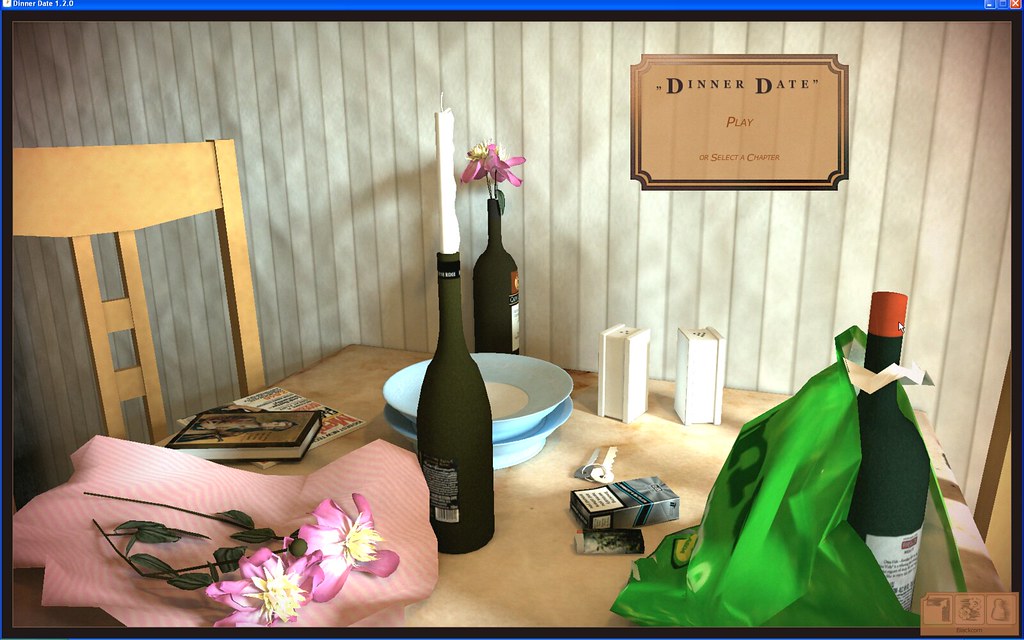If you and your significant other, sitting across from each other at a quaint little bistro, the clink of cutlery and the murmur of conversation enveloping you in a bubble of normalcy. There’s no need to glance at your phone every few minutes, no texts from the babysitter or calls from the grandparents. It’s just the two of you, enjoying a meal and each other’s company, in the middle of the day, while the kids are at school or daycare, blissfully unaware of your absence. This is the beauty of the lunch date, a secret weapon in the parental arsenal for keeping the flame of romance alive amidst the chaos of child-rearing.
Why are lunch dates such a game-changer, you ask? Well, let me tell you a story. Once upon a time, my wife and I were like many other couples with young children – we thought our days of spontaneous outings and uninterrupted conversations were over. Evening dates became a logistical nightmare, with the constant interruptions from caretakers reporting on our little ones’ refusal to adhere to their usual bedtime routines. It seemed impossible to have a moment of peace.
As if by magic, our schedules aligned in such a way that we found ourselves both available for a couple of hours in the middle of the day. We decided to take a leap of faith and do something radical – we took paid time off (PTO) and went on a lunch date. And let me tell you, it was revolutionary.
The lunch date is an amazing break in the workday.
It’s a chance to step out of your professional roles and into your identities as partners. It’s an opportunity to talk about things other than household chores or what needs to be added to the grocery list. You can discuss your dreams, your fears, and reconnect on a level that often gets buried under the daily grind. It’s not just about the conversation. It’s about the act of prioritizing your relationship. By choosing to spend your PTO on a lunch date, you’re saying to each other that your marriage is just as important as your jobs and your roles as parents. You’re investing in the health of your partnership, which in turn creates a more stable and loving environment for your children.

I know what you’re thinking. ‘That sounds great, but what about my vacation days? I don’t want to waste them on something as simple as a lunch date.’ I hear you, and I’ve got some insights that might just change your mind.
Let’s address the legality of vacation policies. According to the Division of Labor Standards Enforcement (DLSE), an employer can indeed set a period at the beginning of employment where no vacation is earned, such as a probationary period. However, this must not be a subterfuge to deny benefits later on. For instance, a vacation plan that offers no vacation in the first year but four weeks in the second year, followed by two weeks in the third, would be considered a subterfuge because it’s clear that some of the vacation time in the second year is actually earned in the first year.
On the other hand, a plan that offers no vacation in the first year, two weeks in the second, three weeks in the third, and so on, would be considered valid. If an employee leaves during the ‘waiting period’ of a subterfuge plan, they are entitled to prorated vacation pay. If the waiting period is valid, no vacation pay is due upon separation during that period.
Vacation is earned as labor is performed, and it can be accrued on a day-by-day, week-by-week, or pay period basis. For example, if an employee is entitled to two weeks of vacation annually and works full-time, they would earn 1.538 hours of vacation for each week they work at least one full day. Upon termination, any earned and accrued but unused vacation must be paid out at the final rate of pay.
Employers can exclude certain classes of employees, such as part-time or temporary workers, from vacation benefits if the policy clearly states this. However, ‘use it or lose it’ policies, where employees lose vacation pay if not used by a certain date, are illegal in California. Vacation pay vests as it is earned and cannot be forfeited. Employers can also implement a ‘cap’ or ‘ceiling’ on vacation accruals, meaning once a certain amount of vacation is accrued, no more can be earned until the balance falls below the cap. This is legal as long as the cap is not a subterfuge to deny benefits and employees have a reasonable time, at least nine months, to use their vacation before the cap takes effect.

Employers can control vacation timing, pay for unused days yearly. Combining leave types under PTO follows vacation rules. If staff take leave early and quit, unearned days can’t be deducted from final pay. It’s seen as wage advance, not recoverable from final wages.
Upon termination, all earned and accrued but unused vacation must be paid out at the final rate of pay. If an employer does not allow carry-over of unused vacation days and an employee is discharged without these days being included in the final paycheck, the employee can file a wage claim or lawsuit to recover the lost wages.
Understanding your employer’s vacation policy is crucial.
If you’re entitled to PTO or vacation time, don’t be afraid to use it for something as ‘simple’ as a lunch date. It’s not a waste; it’s an investment in your relationship and, by extension, your family’s happiness.
Back to the magic of lunch dates. Taking PTO for a midday rendezvous is not just about escaping the demands of parenting for an hour or two. It’s about rediscovering each other as individuals, not just as mom and dad. It’s about nurturing the bond that brought you together in the first place. And let’s be honest, it’s also about enjoying a meal without having to cut anyone else’s food but your own!
If you’re sitting on a pile of vacation days, unsure of how to use them, consider the humble lunch date. It’s a small act that can have a profound impact on your marriage. And who knows, it might just become your new favorite tradition. After all, as my wife and I have discovered, sometimes the best moments are the ones that happen in broad daylight, with just the two of you and a table for two.
Navigating PTO and vacation policies can sometimes feel like trying to solve a Rubik’s Cube blindfolded. But fear not, because I’m here to guide you through the maze with some savvy tips that will have you penciling in those lunch dates with confidence.
Understanding your rights when it comes to PTO is crucial.
Remember, vacation time is not just a company perk; it’s a form of wages earned as you work. So, if you’re past the initial ‘waiting period’ set by your employer, those days are yours to enjoy. And if you’re thinking of saving all your vacation days for a rainy day, think again. ‘Use it or lose it’ policies are a no-go in places like California, so make sure you’re up to speed with your state’s regulations.
If you’re worried about dipping into your PTO for fear of not having enough for a ‘real’ vacation, let’s put things into perspective. A lunch date may seem simple, but it’s about quality, not quantity. A few hours of uninterrupted connection can be as refreshing as a week-long getaway. Plus, you’re likely to return to work with a spring in your step, ready to tackle the rest of the day with renewed vigor.
Communication is key.
Plan your lunch dates in advance and coordinate with your colleagues. If you’re transparent about your plans, you’ll find that most employers value a healthy work-life balance and will support your need for personal time.
What if you’re a part-time employee feeling left out of the vacation loop? While it’s true that companies can exclude certain employee classes from vacation benefits, don’t let that stop you from discussing options with your employer. Perhaps there’s room for negotiation, or maybe you can swap shifts to accommodate a midday rendezvous.
For those of you who’ve hit the vacation accrual ceiling and can’t seem to earn more time off, it’s time to start using those days. Remember, a cap on vacation accruals is legal, but it must be reasonable. Don’t let your hard-earned time off go to waste because you’re waiting for the ‘perfect’ moment to use it.
And to the savvy planners who are thinking of taking vacation in advance of earning it, be cautious. If you leave your job before you’ve accrued the time off, your employer can’t deduct the unearned vacation from your final paycheck. However, it does mean you’ve received an advance on wages, which is essentially a debt owed. So, it’s best to use vacation time as you accrue it to avoid any complications.
If you’re nearing the end of your employment, whether you’re moving on to greener pastures or bidding a not-so-fond farewell, make sure you get paid for any unused vacation time. It’s your right, and it’s the law. Don’t leave money on the table; ensure your final paycheck reflects the vacation time you’ve earned.
For those unfortunate enough to have unused vacation days slip through the cracks at the end of the year, don’t despair. You have options. File a wage claim or take legal action to recover what you’re owed. It’s not just about the money; it’s about standing up for your rights as an employee.
In the event that you need to file a wage claim, the process is straightforward. Once your claim is filed with the Division of Labor Standards Enforcement, it will be reviewed and you’ll be guided through the next steps, which may include a conference or hearing. It’s a path to ensure you’re compensated fairly for the time you’ve put in.
With a little knowledge and planning, you can navigate your PTO and vacation policies like a pro. Use your time wisely, communicate with your employer, and don’t be afraid to take a day for yourself. After all, a lunch date with your significant other is more than just a meal; it’s an investment in your relationship and a well-deserved break from the daily grind.
As we wrap up this guide to navigating PTO and vacation policies, remember that taking time for yourself and your loved ones is not just a luxury; it’s a necessity. In the hustle and bustle of life, especially when children are in the picture, it’s easy to forget that before you were parents, you were partners. Reclaim that connection, one lunch date at a time. Trust me, your family will thank you for it, and your work will benefit from a happier, more balanced you.
Related posts:
Why Lunch Dates Are Ideal for Married Couples – NURTURING MARRIAGE®
Why Lunch Dates Are Important In a Relationship | by Isabellaharriot | Medium
How To Make A Lunch Date A Real Date (themindsjournal.com)


